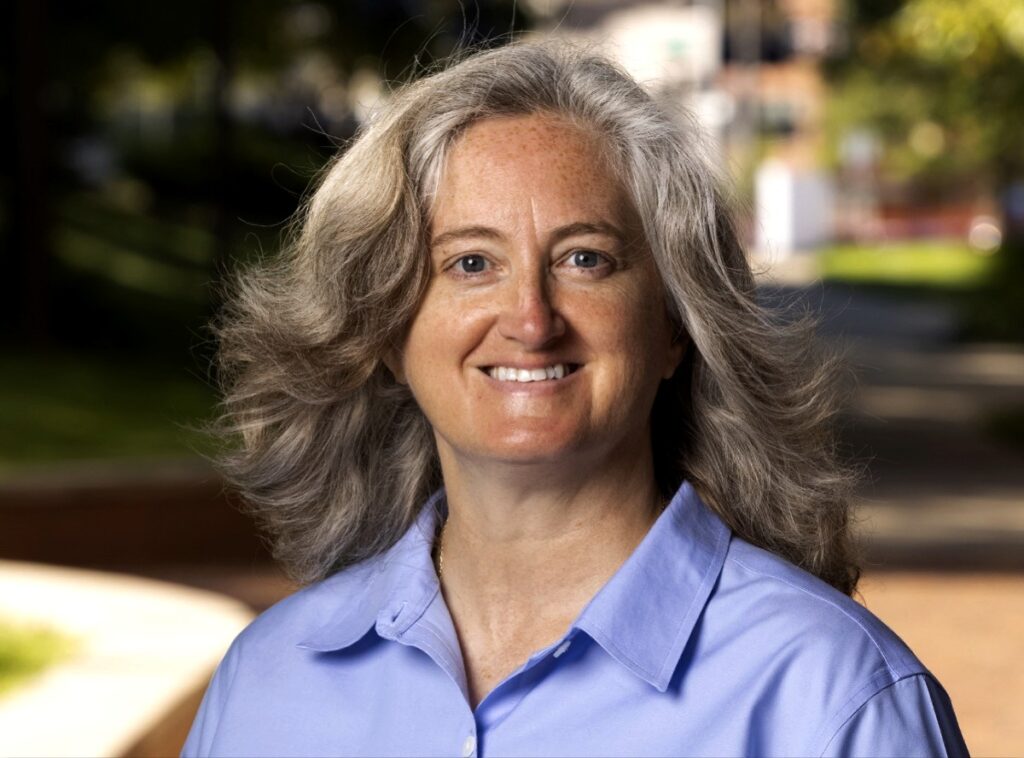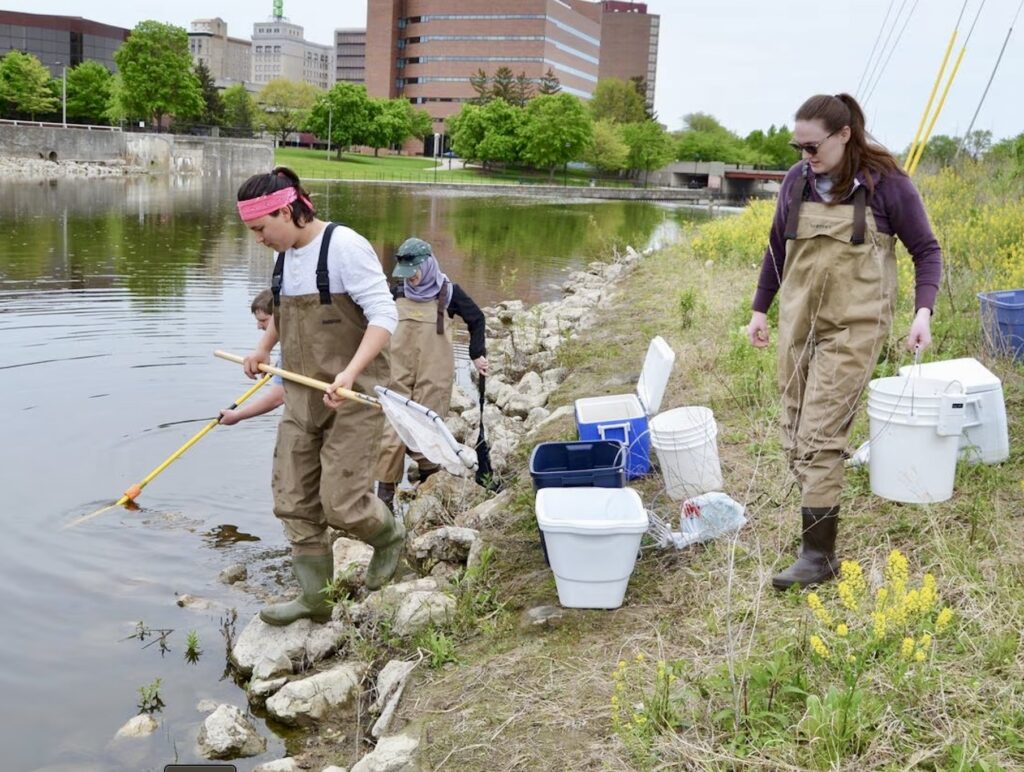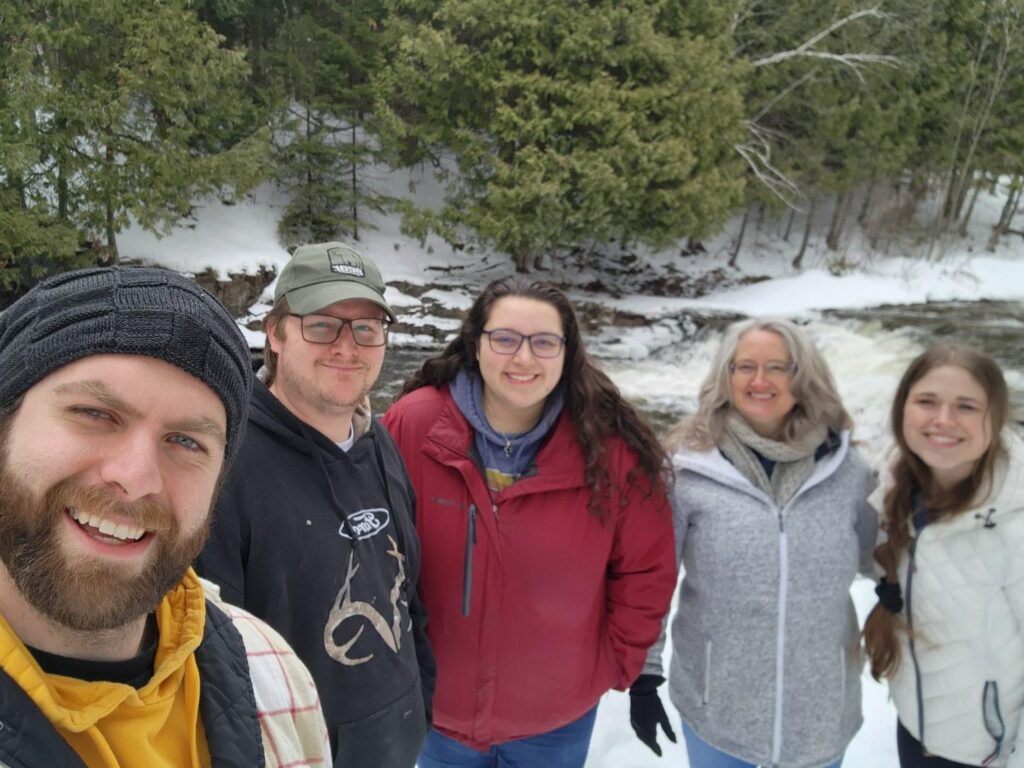Daba Coura Mbow

Heather Dawson, a Professor of Biology, has a special love for fisheries biology and considered becoming a marine biologist. Living in several other states and countries, Heather eventually settled down in her home state of Michigan. Following her passion for aquatic ecology, she went to Michigan State University for her Ph.D. After graduating, she worked for five years with the US Fish and Wildlife Service as a fisheries biologist. Dr. Dawson really enjoyed the time spent in USFWS but missed working as a researcher and being able to teach and interact with students. Thirteen years ago she saw an opportunity at UM-Flint to teach and do research that she couldn’t let go of.
Since 2019, Dr. Dawson has focused her research on understanding water quality and fish populations in watershed systems like the Flint River. Part of her ambition is to also learn more about what is required to take better care of the river and to restore ecosystem dynamics. Much of this conventional ecological restoration agenda was upended when on April 25, 2014, the City of Flint, Michigan changed its municipal water supply source from the Detroit-supplied Lake Huron water to the Flint River. The switch caused water distribution pipes to corrode and leach lead and other contaminants into municipal drinking water. Dawson noticed that some people blamed the river for much of what happened. The water wasn’t treated properly at the city’s water plant. Lead leached from water distribution pipes.

Dawson has concentrated on research and initiatives to revitalize the Flint River. A major project that Dr. Dawson and her students are exploring is the effect of the removal of an old dam, put in place over 100 years ago. Dawson indicates the Hamilton Dam was constructed in 1920 and set to be removed in 2026. The original dam supported milling operations for the region’s logging industry and served as a water source for local industries, but hasn’t had a use in some time.
The Flint Riverfront Restoration Plan recommends removing the Hamilton Dam and placing six riffles nearby to improve the aquatic habitat for fish. Dr. Dawson and her students are examining the biological effects of the revitalization of the river. Some students are looking at the insects that spend part of their lifecycles in the water. Those insects are very sensitive to pollution, and because of that, they can be used to measure the water quality of that part of the river. Some students are evaluating the fish and habitat above and below the Hamilton Dam before removal and will do so after removal to document the changes. Other students are producing watershed report cards for the Flint River and other rivers in Michigan that have more or less developed land surrounding them. Another group of students has put in place an acoustic telemetry study, which places tags inside aquatic animals to track animal movement along the river. Those tags will allow them to see the habitat use and movements of fish that will migrate from the Flint River to the Great Lakes. Dr. Dawson recently received a $60,800 grant from the Michigan Department of Natural Resources to investigate fish passage in the areas being restored in the Flint River. The grant will allow us to evaluate whether the riffles that will be put in place after the dam is removed are being utilized by fish as a habitat and whether the water velocities in the riffles will allow the free movement of fish year-round.

For Dr. Dawson, it is important to have pride in the Flint River. It is a central nervous system of a larger natural environment. Rivers are highly diverse and productive ecosystems, contributing to economic growth, food security, and human well-being. Most of the oldest cities in the world developed around rivers which allow the transport of goods and people. They also support fisheries, and agriculture, and provide recreational, tourism, mental health, and cultural benefits. Even with its recent negative attention in the public mind, Dr. Dawson and her students have been trying to communicate the positive attributes of the River. To promote awareness of those benefits or ecosystem services they have created coloring books of the Flint River in both English and Spanish, they also made t-shirts that state “I support the Flint River”. Grant money has been allowing Dr. Dawson and her students to give away these items for free to the community to illustrate the beauty of the Flint River.

It’s important for the community to protect the Flint River and be proud of it. According to Dr. Dawson, people should be aware of its aquatic and recreational benefits. She believes that people deserve beautiful green space and waterways, and by being open to various restoration efforts in the watershed, the image of the Flint River can change and it will be easier for the community to protect the river. Many more initiatives are needed, but Dr. Dawson and her students will continue to explore the recovery process and demonstrate how the Flint River can again be a source of pride for the community.